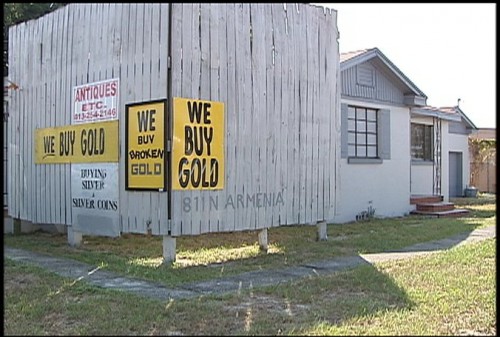Sir Thomas Gresham was an English financier and aide to Queen Elizabeth I, daughter of Henry VIII. Although Gresham never made it on to an episode of The Tudors, his name does live on in one of the most important principles of economics: Gresham’s Law.
In summary, Gresham’s Law states that “bad money drives out good.” What this means is that when the government overvalues one form of money and undervalues another, the undervalued money will disappear from circulation.
The Bimetallic Standard
In the United States, this was evident during the many years of bimetallism, where the dollar was defined in both gold and silver, usually at a ratio of around 15-to-1, silver-to-gold. When the market value of gold was greater than fifteen ounce of silver, people would spend their silver and hold onto their gold; when the market value of gold was less than fifteen ounces of silver, people would spend their gold and hold on to their silver. All of this created economic distortions that were blamed on hard money, when in reality bimetallism was the problem, as explained by Gresham’s Law.
Bimetallism In Practice
Let’s pretend that a new currency, the globo, is redeemable for either one ounce of gold or fifty-five ounces of silver, which is roughly the current exchange rate between the two precious metals. But let’s say that silver goes up 10% to $32 per ounce, while gold falls 10% to $1,435. Now the parity between silver and gold is closer to 45-to-1, instead of 55-to-1. So, under a bimetallic standard, I could buy an ounce of gold for $1,435, and then go to a bank and trade the gold coin for a globo. I could then go across the street and trade the globo in at another bank in exchange for fifty-five ounces of silver. From there, I could go back to the coin shop and sell the silver for $1,760, making a $325 profit in the process.
Obviously, a bimetallic standard cannot be sustained, even if there is just one currency (in this example, there were both globos and the local currency of U.S. dollars). That’s because currencies are just exchange media, and the same example could have been made using another commodity, like coffee, instead of dollars.
Token Currency
For most of its history, the U.S. dollar was backed by both gold and silver. Periodically, the U.S. would be on a gold-only standard, but coinage was still minted in silver. That stopped in 1964, shortly after the death of JFK. Then, in 1971, the dollar’s final remaining link to gold was severed. In 1982, the U.S. mint stopped making pennies that were 95% copper, and instead started producing pennies that were 97.5% zinc. Our currency today is worth little more for its metal content than tokens from Chuck E Cheese.
Congress’s Response
Today, you can still find pennies from 1981 and before in your change. Due to the current value of copper, these coins are worth more than 2.2 cents – 120% more than their face value. For this reason, Congress passed a law in 2006 forbidding the melting down of pennies and nickels – violators face penalties of up to $10,000 in fines, five years in jail, or both.
Save Your Nickels
Nickels are only 25% nickel, but they are 75% copper. Right now, nickels are worth just under 5 cents for their metal content – but that’s only because nickel and copper prices are low right now. Back in February, nickels were worth more than 7 cents. And besides, even if nickels are only worth 98.42% of their face value right now, that’s a lot better than the next-best coin – the modern penny – which is worth less than half a cent. Dimes are worth less than two cents; quarters are worth less than five.
‘We Buy Nickels’
In following Gresham’s Law, intelligent consumers should avoid spending nickels. It makes no sense to spend “good” money when people just as readily accept “bad” money. Paying for something that costs 25 cents could either cost you 24 cents in metal content (five nickels), or it could cost you less than 5 cents (one quarter). Yes, Congress has made it illegal to melt down pennies and nickels, but when the value of their metal content is sufficiently high (say, $1 per nickel), there will be no stopping savvy entrepreneurs who will find a way. Instead of seeing “We Buy Gold” signs on street corners, the future might read “We Buy Nickels.”
Remember Inflation
While nickels were worth more than 7.3 cents in February, it would still take a whole lot of nickels to achieve a worthwhile profit in melt value. However, it’s important for investors to keep an eye to the future. The Federal Reserve System has devalued the dollar by more than 95% in its ninety-eight-year history, and thus, long-term, the nominal prices of nickel and copper are bound to go higher. What’s more, with population growth and diminishing resources, actual market demand for all commodities is likely to go up. Saving your nickels, therefore, is a way to save money without risking purchasing power. Dollars under your mattress will not hold their value, but nickels in an old coffee can will.
Addendum
Here’s something of interest to silver investors: During the years 1942-45, the U.S. mint stopped using nickel for nickels – nickel the commodity was too valuable and needed for the war effort. Instead, they minted nickels with silver during this time! These nickels are now worth $1.64 in metal content.



